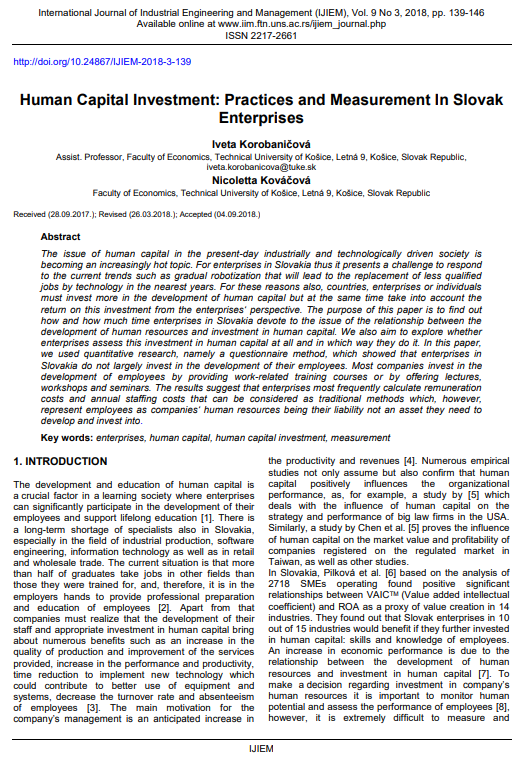
Published 2018-09-30
abstract views: 220 // FULL TEXT ARTICLE (PDF): 0
Keywords
- enterprises,
- human capital,
- human capital investment,
- measurement
How to Cite
Copyright (c) 2023 International Journal of Industrial Engineering and Management

This work is licensed under a Creative Commons Attribution 4.0 International License.
Abstract
The issue of human capital in the present-day industrially and technologically driven society is becoming an increasingly hot topic. For enterprises in Slovakia thus it presents achallenge to respond to the current trends such as gradual robotization that will lead to the replacement of less qualified jobs by technology in the nearest years. For these reasons also, countries, enterprises or individuals must invest more in the development of human capital but at the same time take into account the return on this investment from the enterprises‘perspective. The purpose of this paper is to find out how and how much time enterprises in Slovakia devote to the issue of the relationship between the development of human resources and investment in human capital. We also aim to explore whether enterprises assess this investment in human capital at all and in which way they do it. In this paper, we used quantitative research, namely a questionnaire method, which showed that enterprises in Slovakia do not largely invest in the development of their employees. Most companies invest in the development of employees by providing work-related training courses or by offering lectures, workshops and seminars. The results suggest that enterprises most frequently calculate remuneration costs and annual staffing costs that can be considered as traditional methods which, however, represent employees as companies‘humanresources being their liability not an asset they need to develop and invest into.
Article history: Received (28.09.2017); Revised (26.03.2018); Accepted (04.09.2018)

